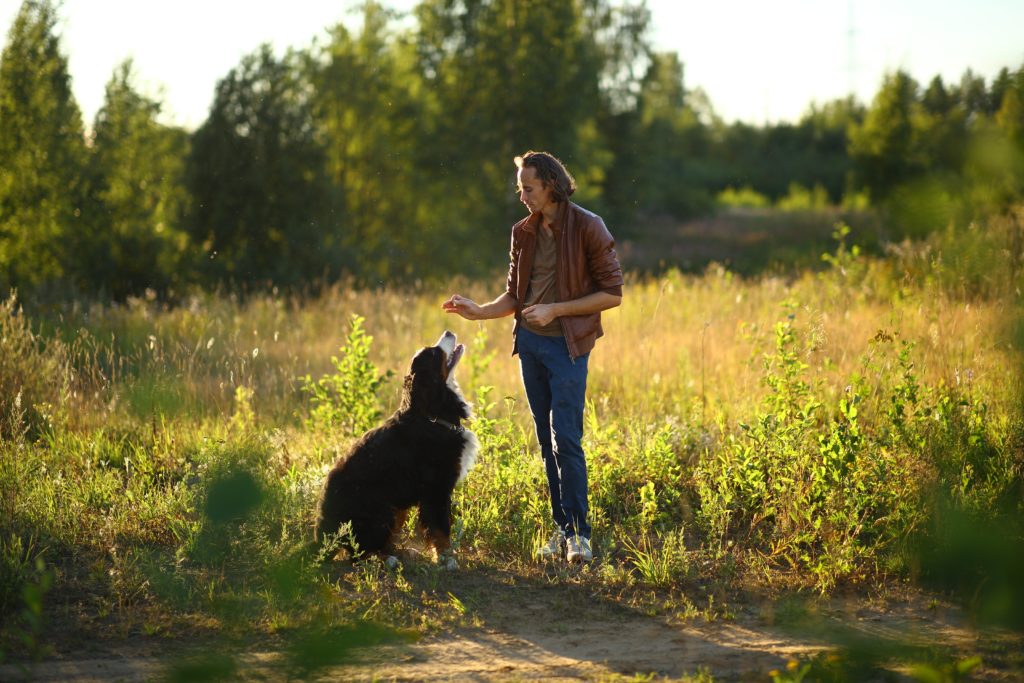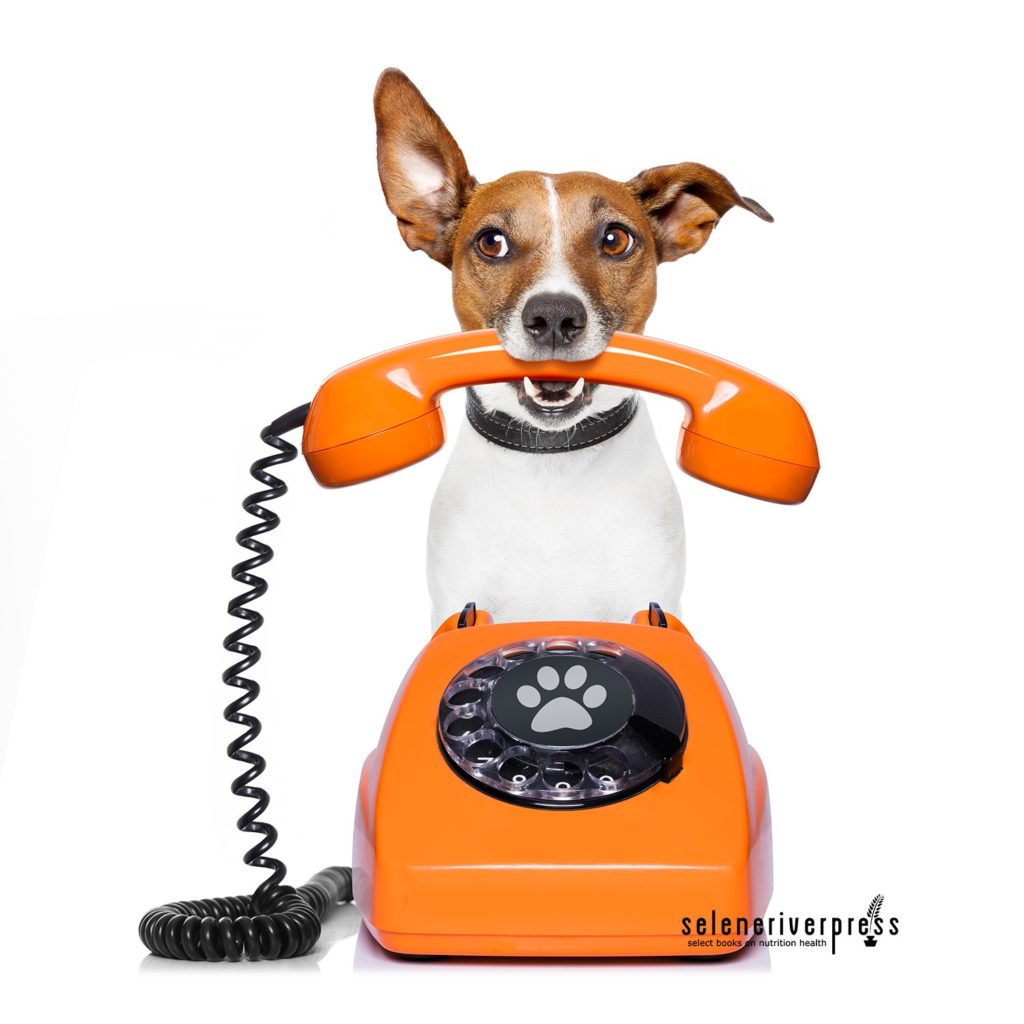Well-behaved dogs make outings much more pleasurable. It’s extremely frustrating to walk a dog that continuously pulls on the leash, barks at other dogs or passersby, or has a tendency to run off. But our four-legged family members don’t instinctively know what we want them to do or how to behave, so it’s our job to teach them right from wrong. They need gestures and language you can both understand.
One of the first steps to take with your new puppy is obedience training. Dogs love doing things with their owners and take great delight in bringing you happiness. Therefore, training is an important part of the bonding process between you and your new puppy. You can start as soon as you bring them home, commonly at about six or seven weeks old. Successful training depends on giving your puppy consistent commands and plenty of praise—and the sky is the limit when it comes to what they can learn. But let’s start with a few of the easiest dog-obedience commands.
Sit: This basic command is one of the easiest to master. Once your puppy learns to sit on command, you have their attention, which makes future training that much easier. First, hold a treat close to your dog’s nose. Now move your hand up, allowing their head to follow the treat as they lower their bottom to the floor. Once your dog is in sitting position, say “sit.” Now give them the treat and plenty of love.
Come: This may be the most important command you can teach your dog—it could even save their life. Dogs are easily distracted, and sometimes their curiosity can lead to a life-threatening situation such as running into oncoming traffic. This command is best taught after first putting a leash and collar on your dog. Bend down to their level and say “come” while gently pulling on the leash. When they reach you, reward them with affection and a treat. Once they master the command while wearing the leash, remove it. Make sure you practice the command in a safe, enclosed area.
Down: This can be one of the more challenging commands for your dog to learn as the down position is submissive. Keep the training positive and relaxed, particularly with fearful or anxious dogs. This works best if you offer an exceptionally good-smelling treat. Hold it in your closed fist right up to your dog’s nose. When they sniff it, move your hand to the floor so their head follows. Then slide your hand along the ground in front of them, encouraging their body to follow. Once in the down position, say “down” as you give the treat and lots of affection.
Stay: The simple act of holding still is an exercise in self-control, which can be a huge challenge for some dogs, especially wriggly young pups. To teach a rock-solid stay, start small and make it easy to get it right (an energetic puppy may start off with a half-second stay, and that’s fine). First, ask your dog to “sit.” Then hold the palm of your hand open in front of you. Say “stay.” Take a few steps backwards. If they come forward, stop and start over. If they stay, reward with a treat and affection. You can gradually increase the number of steps you take before giving the treat.
Leave it: This is a versatile, high-value command. It can let your dog know to leave that gross thing on the sidewalk alone or not approach a pup. A strong “leave-it” acts like a superior-level recall for a dog that loves to chase or run off. This command takes more time and patience. Start by placing a treat in both of your hands. Show one enclosed fist with the treat inside and say “leave it.” Feel free to your dog lick, sniff, mouth, paw, or even bark to try to get at the treat, but ignore these behaviors. Once they stop trying, offer the treat from the other hand. Repeat until your dog moves away from that first fist when you say “leave it.”
Next, only give your dog the treat when they move away from that first fist and also look up at you. Once your dog consistently moves away from the first treat and shows you eye contact when you say the command, you’re ready for the next step. For this you will use two different treats, one that’s just okay and one that’s a tasty favorite. Say “leave it” as you place the less attractive treat on the floor and cover it with your hand. Wait until your dog ignores that treat and looks at you. Remove the first treat from the floor and immediately give them the more enjoyable treat and plenty praise.
Finally, once they’ve got it, place the less tasty treat on the floor, but rather than completely cover it, hold your hand a little bit above it. Over time, you can gradually move your hand farther and farther away until your hand is about six inches above the treat. Now they’re ready to run through this command with you standing up! Simply follow the same steps, but if your dog tries to grab the less tasty treat, quickly cover it with your foot. You cannot rush the process. Remember, you’re asking a lot of your dog. If you take it up a notch and he’s really struggling, go back to the previous stage. Make sure you always reward your puppy for staying put, even if it’s just for a few seconds.
I suggest that you work on training for fifteen minutes a few times every day until your dog has it mastered. Since I’m very health conscience about what treats and food I give to my dogs, I always recommend Standard Process whole food supplements (along with other healthy options such as apples, blueberries, carrots, and cubed meat). Simply break the tablets or wafers into quarters and use them for treats. Dogs love them! My favorites are a ¼ tablet of Catalyn or a ¼ wafer of Calcifood, both of which are excellent for growing puppies and adult dogs alike. And for more tips on dog training, check out “The Ultimate Dog Training Guide for New Owners.”
Catalyn: A multivitamin, multimineral, and phytochemical product, Catalyn also acts as an enzyme source and provides general nutritional support. As such, it can be part of a sound nutritional program. Catalyn is cold processed and made from raw foods. Limit to 4 tablets per day for dogs over 50; 2 tablets per day for dogs between 20–50; and 1 tablet per day for dogs under 20.
Calcifood: Made from cold processed, biologically active, raw bone meal. The nutrients in Calcifood wafers specifically support the growth and repair of bone, teeth, and related structures like ligament and tendons and provides calcium and phosphorus in correct portions. According to Dr. Ron Carsten’s Veterinary Clinical Reference Guide, Calcifood wafers provide enzyme factors, minerals, proteins, and bone tissue determinants. Limit to 6 wafers per day for dogs over 50; 3 wafers per day for dogs between 20–50; and 2 wafers per day for dogs under 20#.
Always, always, always keep training a positive experience and have fun. Once you’ve mastered the basics, try seeing what else you can train your dog to do in “10 Fun, Impressive Tricks You Can Teach Any Dog.”
Images from iStock/damedeeso (main), Aleksandr Zotov (post).


